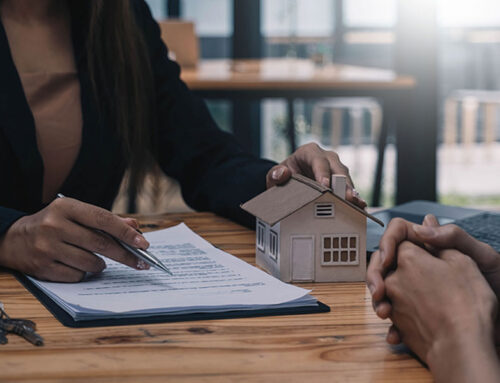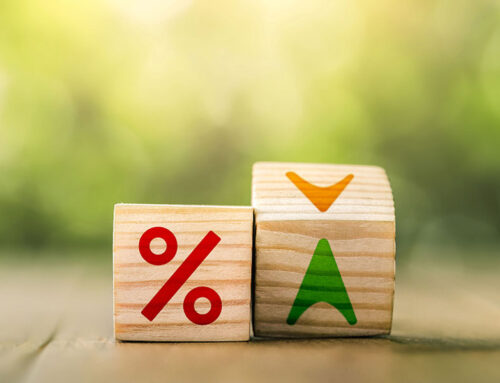I got a call last week from a beginner real estate investor named Jarrod. It seems my landscaper gave him my number because I have been a professional investor for years and Jarrod needed some first-time investment property advice. When we got together for coffee, Jarrod told me what was on his mind. He had a good background in construction, but no real estate investing experience and felt insecure about taking the plunge into buying rental property. I don’t blame him—there’s a lot to learn about investing in rentals. That’s why I didn’t blink when his first question was “What is a good cap rate?” Instead, I offered him another cup of joe and told him the bare fact: there is no ideal cap rate, but there are ways to determine what cap rate on a property is right for you.
What Is a Good Cap Rate for Rental Property?
The capitalization rate—cap rate, for short—is a way to compare the annual rate of return on rental properties. That is, it compares what percentage of your investment you get back every year. This is helpful when looking at investment opportunities with different purchase prices.
The cap rate is not hard to calculate. You take your net operating income (NOI), or the income a property produces minus expenses, and divide that figure by the purchase price of the property. Let’s go through that step by step. For the sake of the example, let’s say you purchase a property for $100,000 and you receive $750 a month in rent from it. That’s $9,000 a year, but out of that amount comes several expenses. What’s left over after you pay your expenses is the NOI:
$9,000 – Annual Rental Income
-$1,000 – Taxes
-$750 – Insurance
-$250 – Maintenance
-$500 – Management costs
$6,500 – NOI
If you divide the NOI by the purchase price, you see how much of your investment you get back in a year:
6,500 / 100,000 = 0.065, or 6.5%
Once you know the cap rate, you can decide if it’s “good” for you. A higher cap rate means more money coming in per dollar invested, but that is only part of the story since it still doesn’t tell you whether that’s number is good enough. To answer that question, you have to look at the big picture—forces that drive the cap rate up or down, what other priorities you have for your investments and, most particularly, your tolerance of risk. So, a good cap rate will be different for different investors and different markets.
Even though there is no one number to look for, or even a minimum that can be pointed to, there are a few generalizations that can be observed. First, the cap rate for single-family rental houses is typically somewhere between 4% and 10%, depending on your local market. Factors like location, employment rate, and housing market trends create demand for a property. High demand creates competition, and that drives purchase prices up, which forces cap rates down. That is why New York City cap rates for residential properties are higher than the cap rates in rural areas with few people moving in and flat job growth.
High demand also reduces one of the biggest risks you face as a landlord: vacancy. If the tenants move out of an investment property in a low-demand area, it might remain vacant for some period of time, reducing your income from it. A higher cap rate in this low-demand area counterbalances the higher risk of you being stuck with holding costs and no tenant. You have to decide how much risk you are willing to tolerate, and that will help you determine what you consider a good cap rate.
Regardless of local demand, the most surefire way to get a good cap rate is to buy at a low price point. Remember that the cap rate tells you how long it takes to earn your investment back. Just as a higher price drives the cap rate down, a lower price increases the cap rate. That is how the purchase price affects your income from the property for as long as you own it. Ideally, you’ll buy at a below-market price in an area with high demand. But, doing that is often easier said than done because, first, you need to find motivated sellers who need to sell quickly.
For Jarrod, this added a whole new layer of questions about real estate investing: Where do you find distressed homeowner leads? Well, I had the answer to that problem, too.
Find Real Estate Investment Opportunities for a Solid Cap Rate
I remember when I was in Jarrod’s position as a beginner investor full of questions. It’s hard to find an investment property you feel sure about. I struggled to get the leads I needed to grow a portfolio of properties as I was starting out, but then I discovered the most surefire way to get leads. And, these aren’t just the kind of leads that make you run in circles trying to nail a deal that won’t get anywhere. The leads I get are qualified leads, meaning a distressed homeowner calls me after they’ve already decided that they need to sell their home to get out from under an “ugly” financial situation. Thanks to the HomeVestors® nationally-known and trusted “We Buy Ugly Houses®” ad campaign, homeowners know that their best option is to reach out to an independently owned and operated HomeVestors® franchisee like me.
If you’d like to receive qualified leads on investment properties that have the potential to deliver cap rates that fit your business goals, give HomeVestors® a call today.
Each franchise office is independently owned and operated.
Contact
"*" indicates required fields






